No matter what your running goals are, a good pair of running sneakers is an important investment — and with a daunting number of options available, it can be confusing to choose. But there are some simple rules to keep in mind, and we talked to experts to get some advice to guide you before you start pounding the pavement.
“Arguably, nothing may be more important than simply how well the shoe fits,” says Rami Hashish, Ph.D., a doctor of physical therapy and body performance and injury expert. There’s no specific evidence that the type of running shoes you don can prevent injuries, suggests an August 2022 meta-analysis of existing studies by a team of British researchers. So skip the hype (and your friends’ recommendations) and read on to find some tips on finding a pair that works for you.
Great neutral show for men
A classic fan favorite, the New Balance 880 is now on its twelfth version. “The heel is softer (and arguably, more comfortable) than previous models, while the forefoot is composed of more dense foam, resulting in greater propulsive energy during toe-off. Furthermore, the upper provides ample ventilation, while the rubber outsole has excellent traction and durability,” says Rami Hashish, Ph.D., a doctor of physical therapy and body performance and injury expert.
Great neutral shoe for women
The Ultraboost has been a maximally cushioned staple for male and female runners going the distance since its debut in 2015. In reimagining the latest iteration, the designers went all in on gendered specificity, using data from over a million foot scans to create male and female lasts around which the new shoe is built. “The Ultraboost 22 has a narrow, S-curved heel and a low instep,” says Rami Hashish, Ph.D., a doctor of physical therapy and body performance and injury expert. Plus, he adds, there’s extra support on the inside of the outsole to help keep feet from rolling inwards, which is more common among women.
Scrolling through running shoes online, you may be overwhelmed with all the head-scratching, high-tech vocabulary — like foams, plates, support structures, and other mysterious materials. But there are a few basic features runners should look for in particular.
Running is a high-impact sport — you’ll take nearly 1,700 steps over the course of just one 10-minute mile. Most running shoes are designed to support specific needs, whether that’s racing, uptempo workouts, walking, easy runs, different terrains, or specific gait patterns. And each one can feel slightly different, especially as the miles add up. It’s important to wear a shoe that not only supports your needs, but fits your foot properly so you maximize your performance and avoid injury.
That’s a lot to think about, so, before you click “purchase” in your online cart, ask yourself these questions:
Cushioning is your first line of defense. “When we talk about cushioning, there are two separate aspects: the stack height of the midsole [AKA the foam material between your feet and the ground] and the softness of the cushioning,” says Caroline Bell, head of shoe reviews for Fleet Feet.
Maximally cushioned shoes have a large amount of foam (measured in millimeters), which can protect your joints by better absorbing impact as you run, while minimally cushioned shoes use less foam and can feel more natural or responsive when you run. The choice between the two is strictly a personal preference, though chunkier shoes (see: Hoka) have skyrocketed in popularity recently.
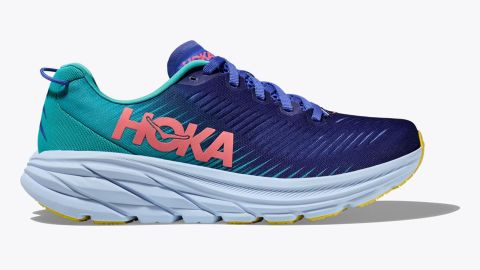
But, Bell adds, not all cushioning is considered equal. “While shoes with higher stack heights are considered to be more cushioned, not all cushioning feels the same,” she says. “Some shoes with higher stack heights have a rigid underfoot feel with little flexibility, while other high-stack-height shoes feel as soft and squishy as marshmallows.”
Heel to toe drop, or the difference in height (again, measured in millimeters) between your heel and the ball of your foot when standing in the shoe, is tied to cushioning. It determines how much foam is under different parts of your foot, and this will affect your running style or stride.
“A high heel to toe drop encourages you to run at sort of an incline, so you hit the meaty part of the heel first to absorb impact and theoretically decrease injuries to the rest of the body,” says Alissa Kuizinas, DPM, a board-certified podiatrist. On the flip side, “the closer to zero millimeters you go, the more weight will be put on your forefoot or midfoot,” says Paul Nasri, a physical therapist who works with middle and long distance runners.
A traditional running shoe usually has a heel drop of around 10 millimeters. “Shoes with a higher heel to toe drop (8 to 12 millimeters) are recommended for people who struggle with Achilles tendonitis, calf tightness, or plantar fasciitis,” says Bell. But higher drops can also lead to ankle stiffness over time, says Kuizinas; without full range of motion at that joint, you won’t be able to push off the ground as powerfully. And lower drop shoes can put more impact forces on the foot and ankle, which can lead to stress reactions.
There are also zero drop shoes, where “the vertical height between the back of the sneaker and the front of the sneaker is 0 millimeters—completely flat,” says Nasri. “We often encourage against these types of sneakers for beginners because most runners are heel strikers by nature, and zero-drop shoes provide less support to the heel of the foot. This can result in greater demand on the metatarsal bones and the Achilles tendon, and we often see stress reactions and stress fracture injuries or Achilles tendonitis when the above scenario occurs.” But runners with knee pain may benefit from lower or zero drop shoes, he says, because it redistributes some of the forces of impact to the foot and ankle joints.
Bell recommends trying a few different shoes with varying heel to toe drops and see what feels best. And “if you’re planning to switch from a higher drop shoe to a lower drop shoe or vice versa,” she adds, “it’s best to gradually transition to allow your body to get used to the different muscles being worked.
To best figure out your foot type, you can always head to a running store and have a professional analyze your gait. Or you can look at the bottom of your current shoes, which will indicate how your foot interacts with the ground. If they are equally worn on the center part of the toe and heel, you have normal pronation. If they are more worn out on the inside or outside of the shoe, you can get a better indication of where you might need more support as you run.
Runners with normal pronation can stick with shoes which “are more flexible and allow for greater freedom of movement,” says Hashish. Otherwise, you might need a stability or motion control shoe. “Stability shoes are designed to help reduce the effects of overpronation, which is the excessive inward rolling of a runner’s foot upon landing,” says Bell. “Stability shoes tend to feature a stiffer sole and a firm post on the medial side [toward the mid-body] of the shoe to keep your feet moving forward. Think of these shoes acting like bumpers on a bowling alley—they keep everything moving forward.”
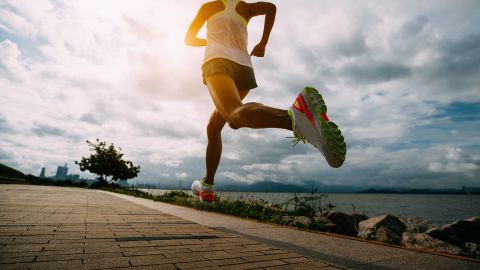
Remember, the number one thing to consider when buying a running shoe is comfort. But what does that feel like throughout the shoe?
Start with the toebox, which is simply the end of the laces to the top of the shoe. It shouldn’t squeeze or press on the front of your foot, and you should be able to wiggle your toes comfortably. “There should be a thumbnail’s length of extra space in the toebox,” says Nasri. To make sure you have enough space, pull out the insole of a shoe and stand on it to see where your toes fall, says Kuizinas.
“The upper should feel snug but not tight,” Bell says, referring to literally everything above the sole of the shoe. “It should hold your foot in place, but still allow a bit of wiggle room. How much wiggle room you need depends on the specific area of the shoe.” There should be no rubbing or extra pressure around the lacing system or tongue.
The back of the shoe should secure your heel so it doesn’t slip around. Most shoes do this with a heel counter, which is a semi-rigid cup layered inside the rearfoot. “Take the webbed space of your hand and pinch the back of the heel while you’re wearing the shoe,” says Nasri. “If it kind of folds in, that’s a sign that there’s not going to be enough support to keep your heel in the cup.” But be careful of a heel counter that’s too rigid or slants forward. “If you look at the shoe from the profile side, make sure that the heel counter is pretty vertical,” says Kuizinas. “If it’s kind of tilted forward, that can be problematic, especially if you have any kind of Achilles issue.” Even without Achilles issues, you’re setting yourself up for discomfort and blisters.
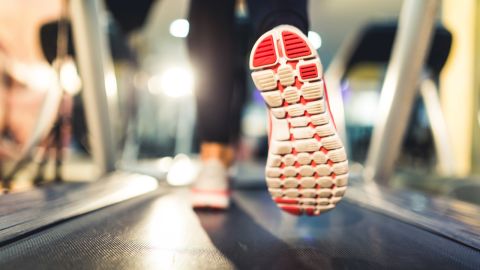
The best thing you can do before you buy is to physically go into a running store and try on multiple pairs of shoes. “Ideally, you want to do a quick lap around the store to make sure there’s enough space in the toebox and your heel is properly supported,” says Hashish. Some stores have treadmills for that exact purpose, and even if you plan on buying online, it can be worth going into a store to have a pro evaluate your gait, find the right fit for your foot shape, and share some recommendations.
Of course, that’s not always possible — or an efficient use of your time. “Luckily, most companies are cool with free returns,” says Nasri. “I’ll tell people who really can’t get out to the store to just order two pairs and return the one that doesn’t fit.” If you are trying on at home, make sure to do laps around your apartment or living room to see how the fit feels.
Another expert tip: Wherever you’re trying on shoes, make sure to do it in the afternoon or evening. Your feet swell throughout the day, and you want a pair that will fit when they’re at their biggest, not smallest. In addition, running shoes can fit differently than street shoes, so you should never just assume you’re the same size in both. You may have to go up a half size or even a full size (and if one foot is slightly larger than the other, go with the size that fits the larger foot, says Nasri).
And don’t justify an iffy fit or any discomfort by thinking it needs some breaking in. “Modern running shoes use different materials in the upper than what was used ten or even five years ago,” Bell explains. “These materials don’t need to be broken in. The fit should feel comfortable right out of the box. If it’s not, try on a different pair.”
Here’s the most important thing, though: “The biggest shopping mistake I see people make is failing to understand that, with so many options available, your perfect fit will depend on the shape of your unique foot,” says Bell. “Just because your running buddy raves about his or her pair of shoes doesn’t mean they’re going to work for you.”





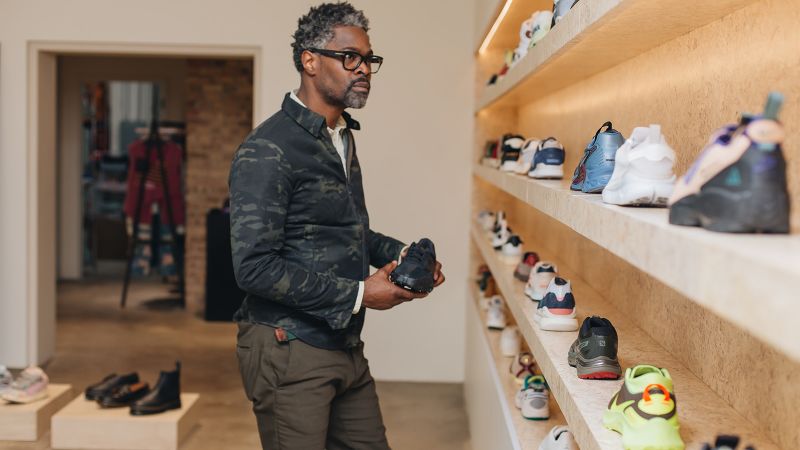
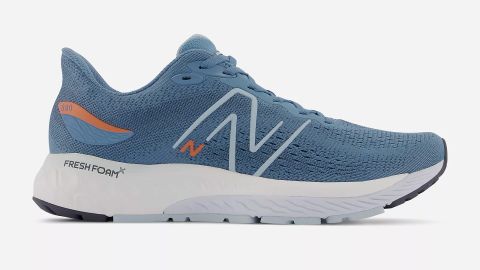
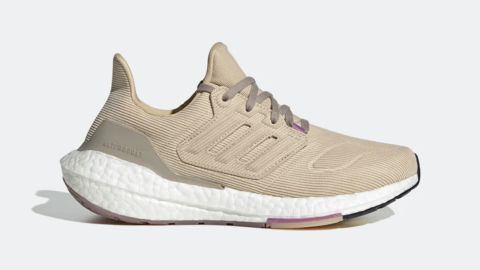
More News
Chicago Museum Says Investigators Have No Evidence Art Was Looted
Donald M. Payne Jr., Five-Term New Jersey Representative, Dies at 65
Could Eating Less Help You Live Longer?